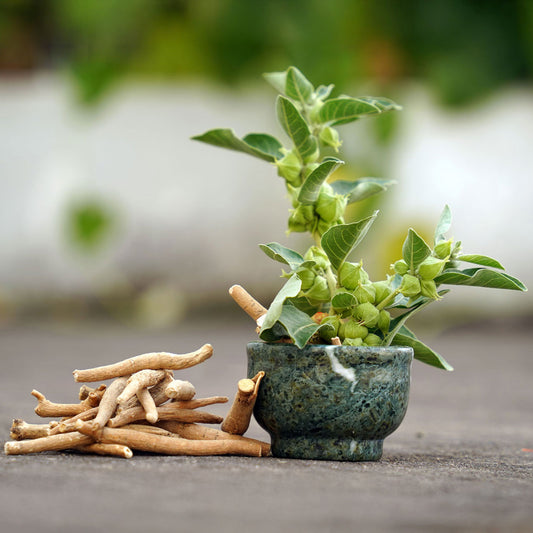3 Ways to Beat Those Annoying Seasonal Allergies

I hate allergies. They’re one of mother nature’s cruel jokes.
Just when the sun pokes through the clouds and I feel its warmth for the first time in months, I’m stricken with watery eyes and rapid-fire sneezes.
Fresh air? I wouldn’t know, it’s all the same to my stuffy nose.
The OTC allergy medications help a bit, but they also make me tired and tend to dry out my sinuses so much I get nose bleeds.
(I’ve instructed our herbalist to fast-track a supplement for allergies)
So in the meantime, this is what I’m trying to get me through allergy season:1. Neti Pot
I won’t sugar-coat it...the neti pot takes some getting used to, but it’s a great way to clear out your sinuses.
A 2012 review1 found that participants who tried this method saw a “27.66% improvement in nasal symptoms, a 62.1% reduction in medicine consumption, a 31.19% acceleration of mucociliary clearance time, and a 27.88% improvement in quality of life.”
It’s pretty straight-forward:
You fill a special tea-pot with water and mix a saline solution, tilt your head to the side, and pour it up one of your nostrils. The solution travels up your nose and out the other side.
It's a little gross and uncomfortable at first, but it works wonders.
2. Butterbur
Butterbur is a flowering plant that’s been used in traditional medicine for thousands of years for migraines and allergies, and the research is pretty incredible.
When 580 people took a butterbur extract for two weeks, a whopping 90% reported a reduction in seasonal allergies.2
And two separate studies with a total of 346 people found that butterbur was as effective as two common OTC allergy medications.3,4
3. Vitamin C
Is there anything Vitamin C doesn’t do?!
It looks like Vitamin C may lower levels of ‘histamine’ instead of blocking it like antihistamines. And additional research indicates that Vitamin C is a safe alternative strategy for fighting seasonal allergies.5,6
Allergies aren’t going to keep me inside this year!
References:
- Hermelingmeier KE;Weber RK;Hellmich M;Heubach CP;Mösges R; “Nasal Irrigation as an Adjunctive Treatment in Allergic Rhinitis: a Systematic Review and Meta-Analysis.” American Journal of Rhinology & Allergy, U.S. National Library of Medicine, pubmed.ncbi.nlm.nih.gov/23168142/
- U;, Käufeler R;Polasek W;Brattström A;Koetter. “Efficacy and Safety of Butterbur Herbal Extract Ze 339 in Seasonal Allergic Rhinitis: Postmarketing Surveillance Study.” Advances in Therapy, U.S. National Library of Medicine, pubmed.ncbi.nlm.nih.gov/16751170/
- ;, Schapowal A; “Treating Intermittent Allergic Rhinitis: a Prospective, Randomized, Placebo and Antihistamine-Controlled Study of Butterbur Extract Ze 339.” Phytotherapy Research : PTR, U.S. National Library of Medicine, pubmed.ncbi.nlm.nih.gov/16114089/
- ;, Schapowal A; “Randomised Controlled Trial of Butterbur and Cetirizine for Treating Seasonal Allergic Rhinitis.” BMJ (Clinical Research Ed.), U.S. National Library of Medicine, pubmed.ncbi.nlm.nih.gov/11799030/
- X;, Johnston CS;Martin LJ;Cai. “Antihistamine Effect of Supplemental Ascorbic Acid and Neutrophil Chemotaxis.” Journal of the American College of Nutrition, U.S. National Library of Medicine, pubmed.ncbi.nlm.nih.gov/1578094/
- AM;, Thornhill SM;Kelly. “Natural Treatment of Perennial Allergic Rhinitis.” Alternative Medicine Review : a Journal of Clinical Therapeutic, U.S. National Library of Medicine, pubmed.ncbi.nlm.nih.gov/11056414/.




